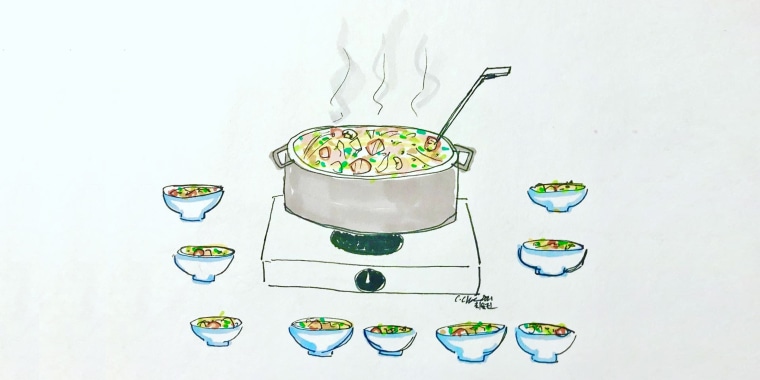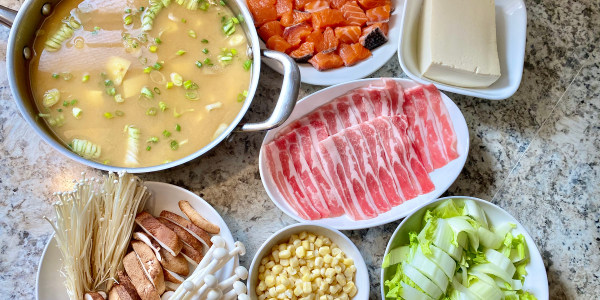It's winter, which means it's hot pot season.
The Chinese method of quick-cooking and retrieving thinly-cut dip meats and vegetables in a communal hot broth has been around for centuries, and it’s a tradition that continues in many households today.
Though there are many different takes on hot pot from the many cultural regions of China alone, it’s a ubiquitous meal had throughout east and southeast Asia: shabu shabu and sukiyaki in Japan, jeongol in Korea, lok-lok in Malaysia, lẩu in Vietnam, to name just a few.
Whether cooked on a stovetop or a tabletop gas stove, in earthenware or an electric pot, hot pot is prepared and cooked in many different ways, with all different types of ingredients, depending on where you are. In Beijing, China, traditional hot pot is cooked with a metal volcano-shaped hot pot, and mutton is a common main ingredient in northern China. In the Sichuan province, chiles and peppercorns create the signature mala (spicy and numbing) flavor of the broth. Some hot pots provide dividers to separate diners’ meals, or to provide different soup bases, and some also provide a center area for grilling. It can be presented both as a casual experience, as well as upscale one, as chef Mako Okano does with her shabu shabu omakase at Shabu Shabu Macoron in New York City.
In the end, all roads taken are in hopes of leading to a delicious boiling broth filled with comforting goodness — plus a dipping sauce on the side.
Though traditionally one dips their meats and vegetables into the broth to cook them, I grew up in a Korean American household where we would cook our hot pot ingredients all together in our electric pot at the kitchen table. My dad used to cook a doenjang broth with vegetables, tofu and bulgogi, his improvised version of jeongol for us to share.
In the age of COVID-19, a communal meal is something we've all dreamt of having again. In our household these days, we've been making hot pot for two, or at most, four or five with my immediate family, or delivering leftover hot pot to our nearby friends. Even a small hot pot has plenty to go around.
My go-to hot pot recipe over the years contains many of the pantry staples I typically have around, especially during the winter. If I'm unable to make fresh dashi (kombu and bonito stock), I turn to Hondashi, which supplies solid flavor and brininess. I later found out from a friend that my go-to hot pot was very similar to Ishikari nabe, a salmon hot pot recipe from the Hokkaido region of Japan. Sometimes, some of the greens I have on hand might make their way in there, or I might throw in noodles rather than potatoes, and the broth might get a dash of spiciness.
By all means, feel free to customize your hot pot to suit your tastes and cravings. However you decide to make it, it'll always warm you up, providing much-needed comfort on a cold winter day.
Hot pot essentials
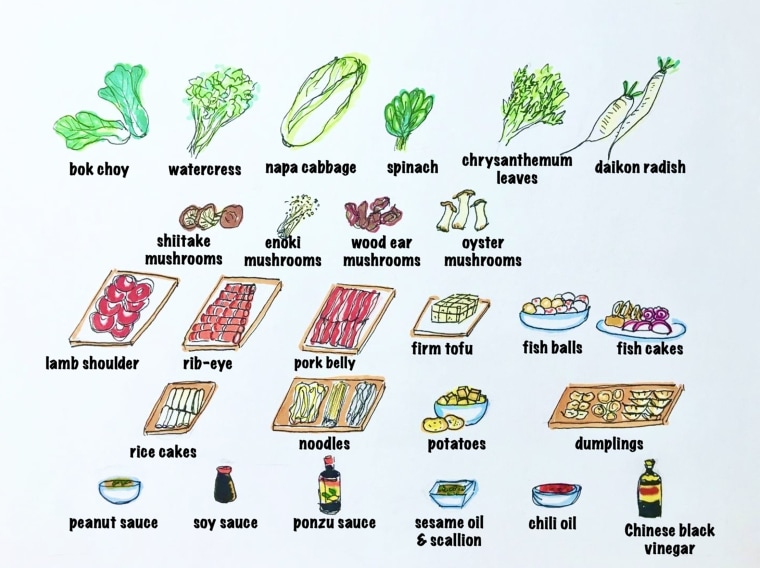
Salmon & Pork Belly Hot Pot ingredients
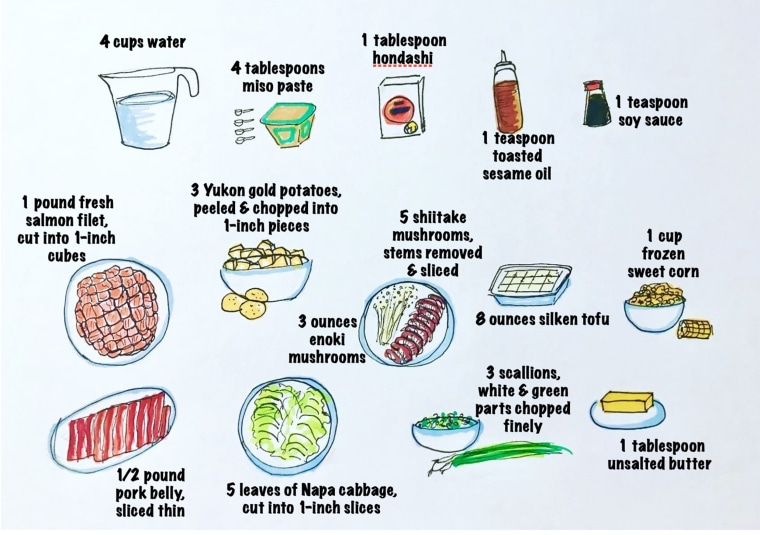
Preparation
In a shallow, large pot (one that can hold about 5 quarts), pour in your water and add in the Hondashi, stirring together over medium-high heat.
Then, in a small bowl, whisk together the white miso paste and a small amount of the water from the pot until the miso fully dissolves in the liquid. Add the miso liquid to the pot, as well as the toasted sesame oil and soy sauce. Stir well to combine.
Bring the broth to a boil and lower the heat to medium-low to simmer.
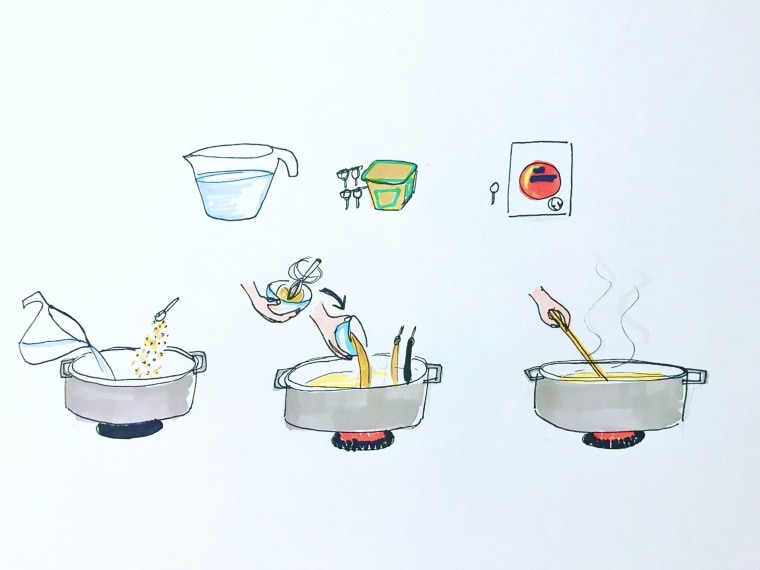
Carefully add the chopped potatoes and chopped scallions to the broth. Cover the pot with its lid and cook for about 15 minutes.
When the 15 minutes are up, carefully add the napa cabbage, enoki and shiitake mushrooms to the broth. Cover the pot again and allow the broth to cook for another 10 minutes.
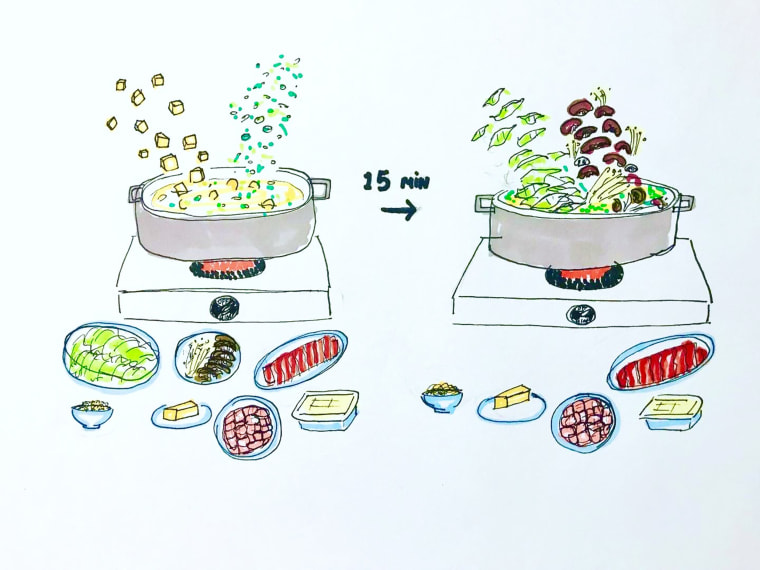
Uncover the pot and carefully add the pork belly and salmon pieces to the broth.
With a spoon, add the silken tofu to the broth by the spoonful, however big or small you want the pieces to be.
Allow the proteins to cook for another 5 to 7 minutes, or until the salmon and pork belly are just cooked through (try not to overcook the meats, or they will be tough; feel free to skim off any scum that might rise to the top of the broth).
Once the pork and salmon are cooked, add in the frozen corn and butter.
Gently give the broth a stir to distribute the corn and allow the butter to melt (feel free to add another tablespoon if you'd like more). Turn off the heat.
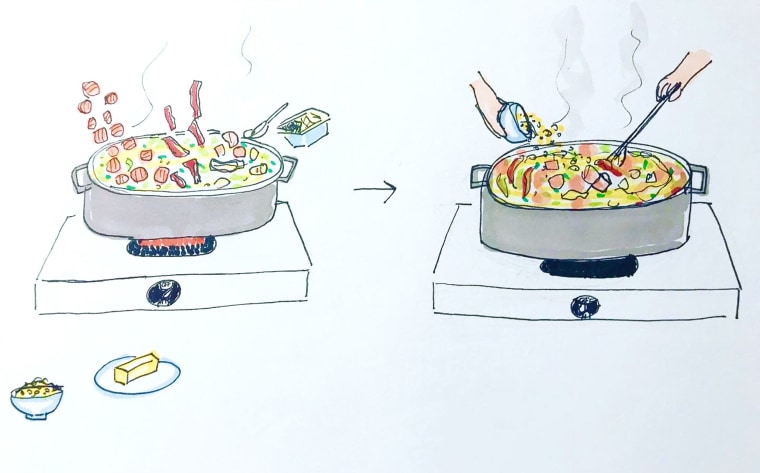
Ladle hot pot contents into individual bowls. Serve and enjoy with your choice of dipping sauce!
